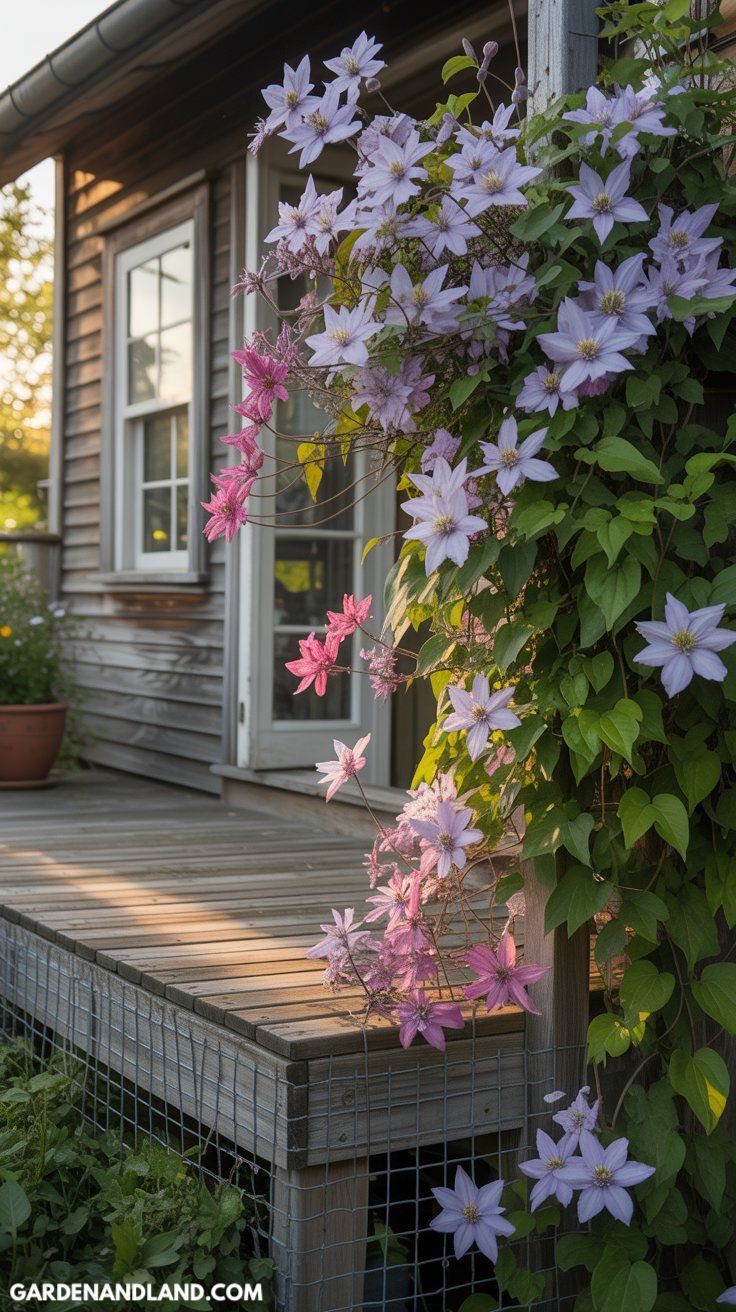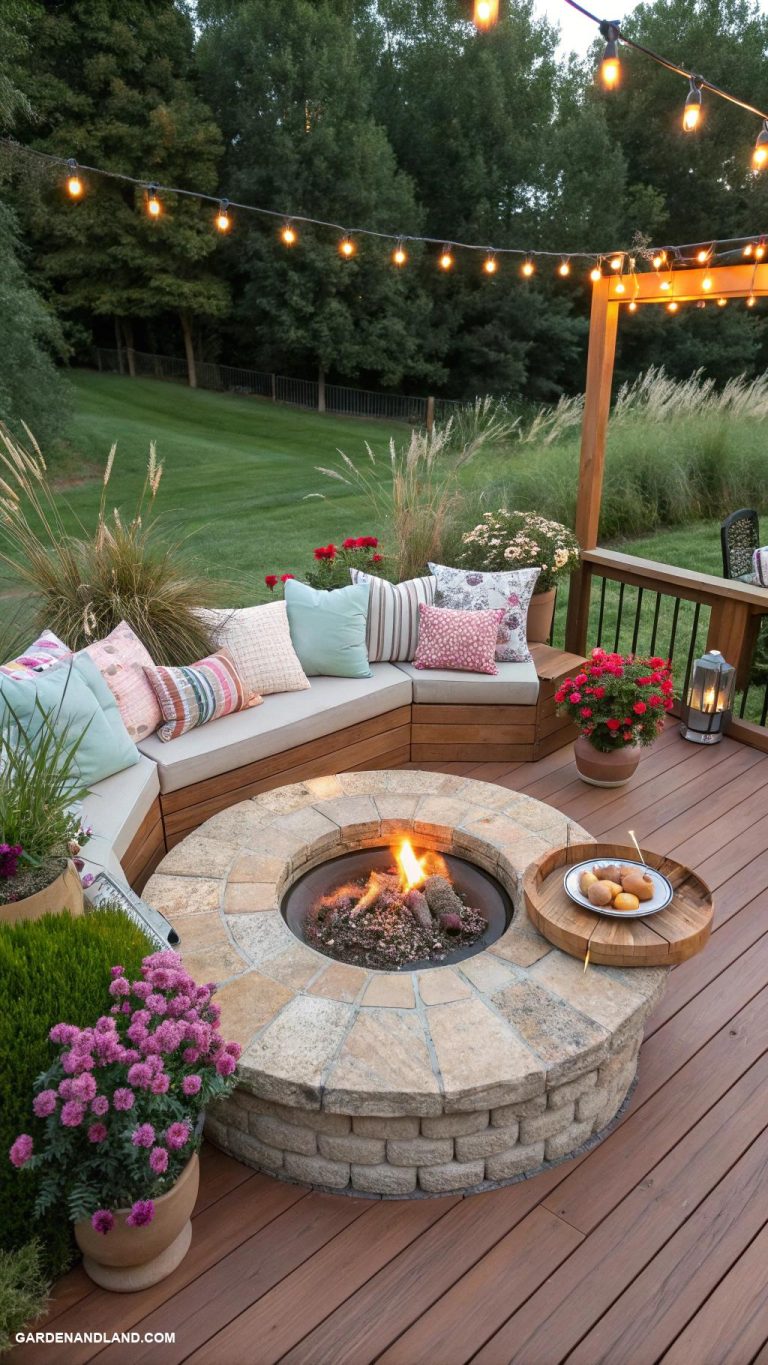10 Best Lattice Alternatives for Under Decks
We may earn a commission through all links on this website. As an Amazon Associate, we earn from qualifying purchases.
As the weather warms up and the sun shines brighter, our outdoor spaces become an extension of our homes, inviting us to spend more time surrounded by nature’s beauty. But for those with decking, the space underneath can often feel like an afterthought, a dark and forgotten area that’s only used for storing outdoor furniture or miscellaneous items.
Lattice is a classic choice for deck skirting, but if you’re looking to elevate your outdoor space with something more unique, durable, or low-maintenance, there are plenty of inventive options. These alternatives not only hide the under-deck area (keeping out pests and debris) but also add style, ventilation, and even functionality like storage.
I’ve focused on creative twists that go beyond the ordinary, drawing from modern, rustic, and eco-friendly vibes. Each idea includes pros, installation tips, and why it’s a fresh take.
Horizontal Wood Slats with Varying Widths
For a sleek, modern farmhouse look, install horizontal cedar or pressure-treated wood slats spaced 1-2 inches apart, alternating narrow (1×4) and wider (1×6) boards for visual interest. Stain them in a driftwood gray for contrast. It mimics shiplap siding but adds depth and shadow play, turning the under-deck into an architectural feature.
Pros: Excellent airflow, customizable, and pest-resistant if treated.
Installation tip: Frame with 2x4s around the perimeter, screw slats from behind, and add a hinged access panel for storage. Costs about $5-10 per linear foot.
Faux Stone or Brick Veneer Panels
Use lightweight polyurethane faux stone panels in a stacked ledger or river rock style to create a natural, cabin-like base. Mix textures like rugged gray stone with subtle brick accents. It transforms your deck into a seamless extension of a stone foundation, perfect for blending with landscape boulders.
Pros: Chip-proof, no mortar needed, and highly durable against weather.
Installation tip: Adhere panels to a plywood backing framed under the deck with construction adhesive and screws; ventilate with small gaps. Around $10-15 per square foot.
Corrugated Galvanized Metal Panels
Mount wavy galvanized steel sheets horizontally or vertically, painted in matte black or rusty patina for an industrial edge. Cut custom shapes for curves around posts. The rippled texture adds a barn-inspired, edgy contrast to wooden decks, reflecting light for a dynamic shimmer.
Pros: Fire-resistant, mold-proof, and lasts 20+ years with minimal upkeep.
Installation tip: Attach to a wood frame with self-tapping screws; poke ventilation holes if needed. Budget-friendly at $3-7 per square foot.
Decorative Polypropylene Screen Panels
Opt for geometric or floral-patterned polypropylene screens (like trellis-style with abstract cutouts) in bold colors like teal or sage. They turn the under-deck into an artistic canvas, evoking Moroccan screens or modern art installations.
Pros: Lightweight, UV-resistant, and allows 50% airflow while blocking views.
Installation tip: Snap or zip-tie panels into a metal or PVC frame; easy to swap designs seasonally. Costs $8-12 per panel.
2 ft. x 4 ft. Sprig Umber Decorative Screen Panel
$30.99 (as of October 18, 2025 01:06 GMT -04:00 - More infoProduct prices and availability are accurate as of the date/time indicated and are subject to change. Any price and availability information displayed on [relevant Amazon Site(s), as applicable] at the time of purchase will apply to the purchase of this product.)Bamboo or Reed Fencing Rolls
Roll out natural bamboo poles or reed mats, tied with twine accents, for a tropical tiki-bar feel. Vary pole diameters for texture. It brings an exotic, boho vibe, and you can weave in fairy lights or hanging planters for a living wall effect.
Pros: Eco-friendly, quick to install, and naturally insulating.
Installation tip: Secure to posts with galvanized wire; seal ends with varnish to prevent splitting. About $2-5 per linear foot.
Vertical Composite Boards in Chevron Pattern
Use low-maintenance composite boards (like Trex) cut at angles to form a herringbone or chevron design, in a weathered wood tone. The angled layout adds movement and sophistication, like a high-end wallpaper under your deck.
Pros: Fade- and rot-resistant, no painting required.
Installation tip: Build a frame, then nail boards with slight overlaps for drainage; include vents every 4 feet. $10-15 per linear foot.
Hog Wire
Hog wire, also known as hog panel fencing or livestock panels, is an excellent lattice alternative for under-deck skirting, offering a rugged yet modern aesthetic. Made from heavy-gauge galvanized steel wires welded into a grid (typically 4-inch by 4-inch or 2-inch by 4-inch squares), it’s commonly used in agricultural settings but has gained popularity in home design for its industrial-chic vibe.
Hog wire stands out for its minimalist, utilitarian look that bridges rustic and contemporary styles. The open grid pattern creates a semi-transparent barrier, allowing airflow and light while partially concealing the under-deck area.
Galvanized or powder-coated hog wire is rust-resistant and withstands harsh weather, lasting 20+ years with minimal maintenance.
The open grid ensures excellent airflow, reducing moisture buildup and deterring pests like rodents while still providing visual screening.
Typically $2-5 per linear foot, hog wire is cost-effective, making it budget-friendly compared to composite boards or stone veneer.
Living Green Wall with Wire Mesh and Vines
Stretch galvanized wire mesh or cattle panels, then train fast-growing vines like ivy or jasmine to climb it, interspersed with potted ferns. It creates a lush, vertical garden that evolves over time, turning the under-deck into a secret Eden.
Pros: Natural pest deterrent, improves air quality, and hides imperfections organically.
Installation tip: Anchor mesh to frames 6-8 inches from the deck for airflow; irrigate with drip lines. $4-8 per square foot initial setup.
Woven Wicker or Rattan Mats
Staple or frame coastal-style woven wicker mats (like those from beach fencing) for a relaxed, seaside hammock vibe. The organic weave adds texture and warmth, mimicking a thatched hut for a whimsical escape.
Pros: Flexible for uneven ground, rot-resistant if treated, and easy to cut.
Installation tip: Attach to a backing board with staples; overlap seams for full coverage. Around $3-6 per linear foot.
Recycled Pallet Wood Planks with Stenciled Designs
Disassemble pallets into planks, arrange vertically or horizontally, and stencil geometric patterns or murals with outdoor paint. Upcycled materials tell a story—add personalized art like waves or abstracts for a DIY masterpiece.
Pros: Ultra-budget (often free pallets), rustic charm, and promotes sustainability.
Installation tip: Sand and seal planks, frame simply, and space for ventilation; reinforce with brackets. Less than $2 per linear foot.
These ideas can be mixed and matched—for instance, combine slats with greenery for a hybrid look. Always prioritize ventilation to prevent moisture issues, and check local codes for installation. If your deck is high enough, incorporate a door for storage access to maximize utility. For more inspiration, consider your home’s style and climate to pick the perfect fit!











